
Carbonaceous chondrites are a type of stony meteorite that is rich in organic compounds, including amino acids. These amino acids, which are the building blocks of proteins, are of great interest to scientists as they may provide clues about the origin of life on Earth and the potential for life on other planets. Understanding how carbonaceous chondrites acquired these amino acids is a crucial step in unraveling the mysteries of our solar system and the origins of life.
The researchers replicated the conditions of an interstellar cloud and an asteroid to gain a deeper understanding of how carbonaceous chondrites acquired amino acids.
A recent study led by Dr. Danna Qasim, a research scientist at the Southwest Research Institute, suggests that the conditions within interstellar clouds may have had a substantial impact on the presence of key building blocks of life in the solar system.
“Carbonaceous chondrites, some of the oldest objects in the universe, are meteorites that are thought to have contributed to the origins of life. They contain several different molecules and organic substances, including amines and amino acids, which are key building blocks of life that were critical to creating life on Earth. These substances are necessary to create proteins and muscle tissue,” Qasim said.
Most meteorites are pieces of asteroids that shattered in the asteroid belt, situated between Mars and Jupiter, a long time ago. These fragments orbit the Sun for extended periods, potentially millions of years, before they collide with Earth.
One of the questions Qasim and others are trying to answer is how amino acids got into the carbonaceous chondrites in the first place. Because most meteorites come from asteroids, scientists have attempted to reproduce amino acids by simulating asteroid conditions in a laboratory setting, a process called “aqueous alteration”.
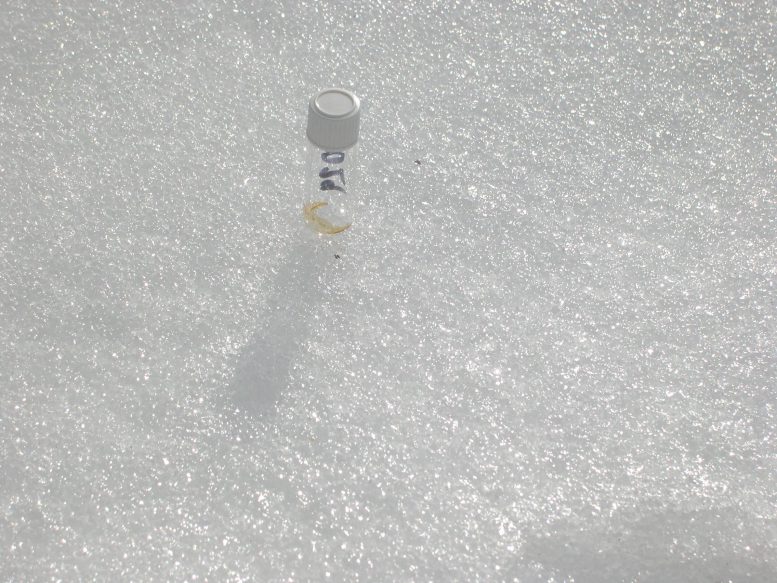
To determine to what extent amino acids formed from asteroid conditions and to what extent they were inherited from the interstellar molecular cloud, Qasim and her team simulated the formation of amines and amino acids as it would occur in the interstellar molecular cloud, forming an organic residue (pictured above). She then processed the residue under asteroid-relevant conditions, also known as aqueous alteration. Credit: Southwest Research Institute
“That method hasn’t been 100% successful,” Qasim said. “However, the make-up of asteroids originated from the parental interstellar molecular cloud, which was rich in organics. While there’s no direct evidence of amino acids in interstellar clouds, there is evidence of amines. The molecular cloud could have provided the amino acids in asteroids, which passed them on to meteorites.”
To determine to what extent amino acids formed from asteroid conditions and to what extent they were inherited from the interstellar molecular cloud, Qasim simulated the formation of amines and amino acids as it would occur in the interstellar molecular cloud.
“I created ices that are very common in the cloud and irradiated them to simulate the impact of cosmic rays,” explained Qasim, who conducted the experiment while working at NASA’s Goddard Space Flight Center in Greenbelt, Maryland, between 2020 and 2022. “This caused the molecules to break up and recombine into larger molecules, which ultimately created an organic residue.”
Qasim then processed the residue again by recreating asteroid conditions through aqueous alteration and studied the substance, looking for amines and amino acids.
“No matter what kind of asteroid processing we did, the diversity of amines and amino acids from the interstellar ice experiments remained constant,” she said. “That tells us that interstellar cloud conditions are quite resilient to asteroid processing. These conditions could have influenced the distribution of amino acids we find in meteorites.”
However, the individual abundances of amino acids doubled, suggesting that asteroid processing influences the amount of amino acids present.
“Essentially we have to consider both the interstellar cloud conditions and processing by the asteroid to best interpret the distribution,” she said.
Qasim looks forward to studies of asteroid samples from missions such as OSIRIS-REx, which is currently on its way back to Earth to deliver samples from the asteroid Bennu here in September, and Hayabusa2, which recently returned from the asteroid Ryugu, to better understand the role the interstellar cloud played in distributing the building blocks of life.
“When scientists study these samples, they’re typically trying to understand what the asteroid processes are influencing, but it’s clear we now need to address how the interstellar cloud is also influencing the distribution of the building blocks of life,” Qasim said.
Reference: “Meteorite Parent Body Aqueous Alteration Simulations of Interstellar Residue Analogs” by Danna Qasim, Hannah L. McLain, José C. Aponte, Daniel P. Glavin, Jason P. Dworkin and Christopher K. Materese, 9 January 2023, ACS Earth and Space Chemistry.
DOI: 10.1021/acsearthspacechem.2c00274

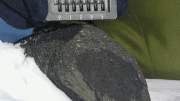
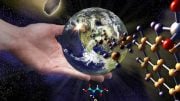

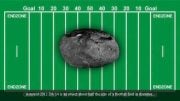


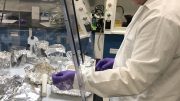
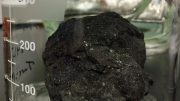
Be the first to comment on "Unraveling the Origins of the Building Blocks of Life: The Role of Interstellar Clouds"